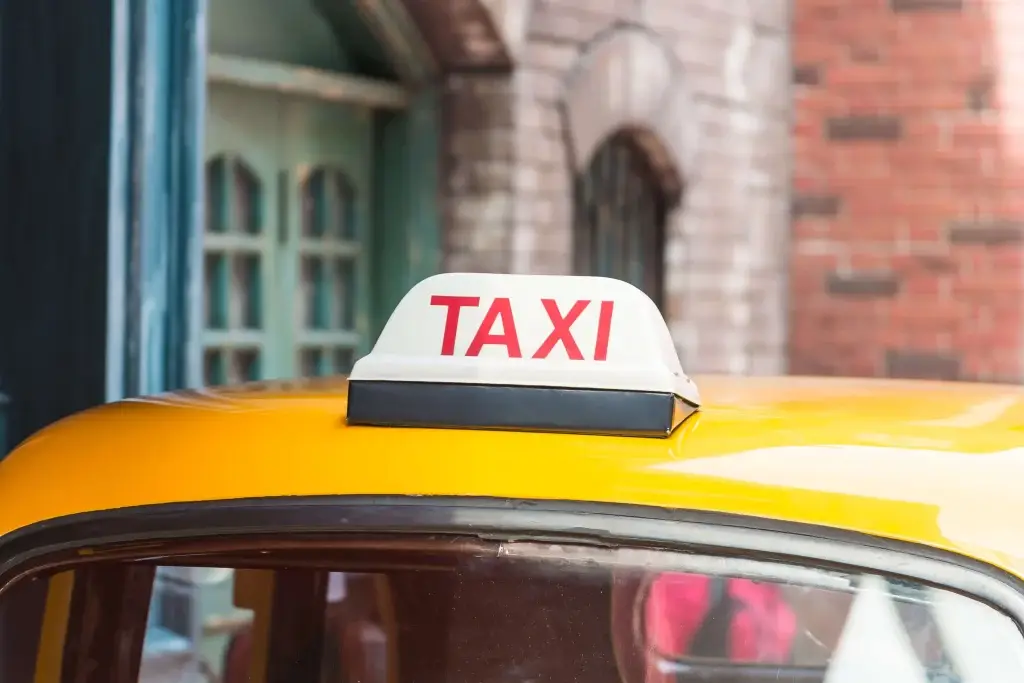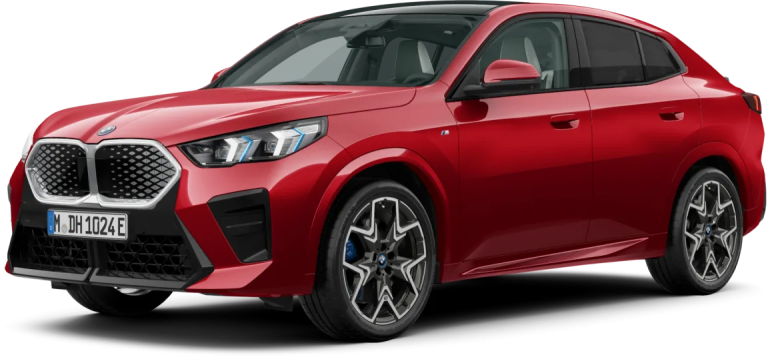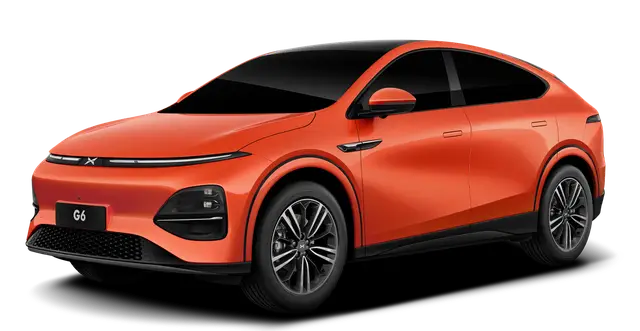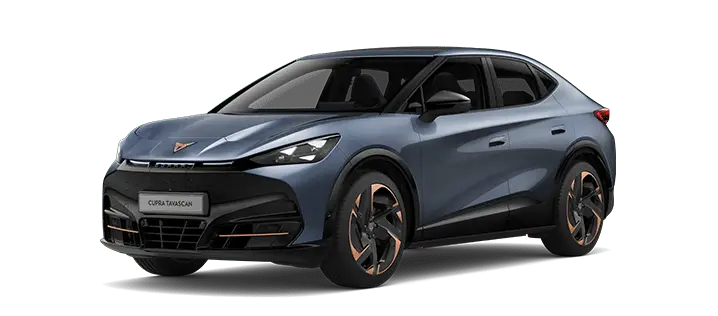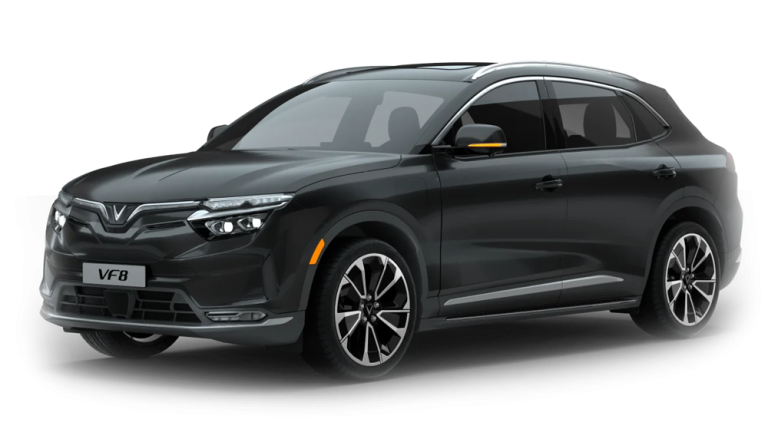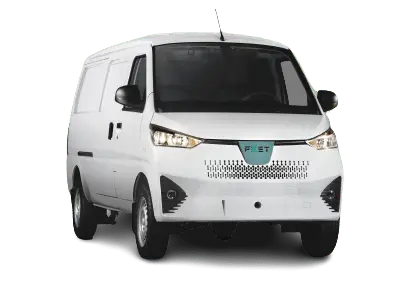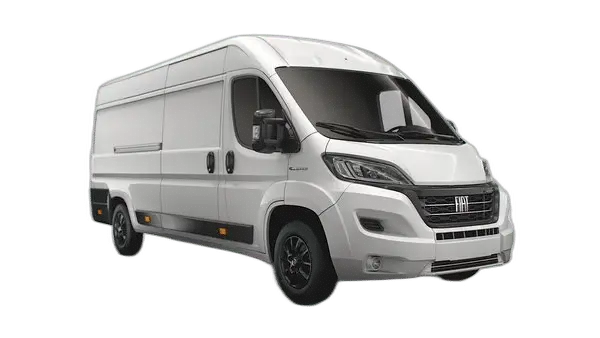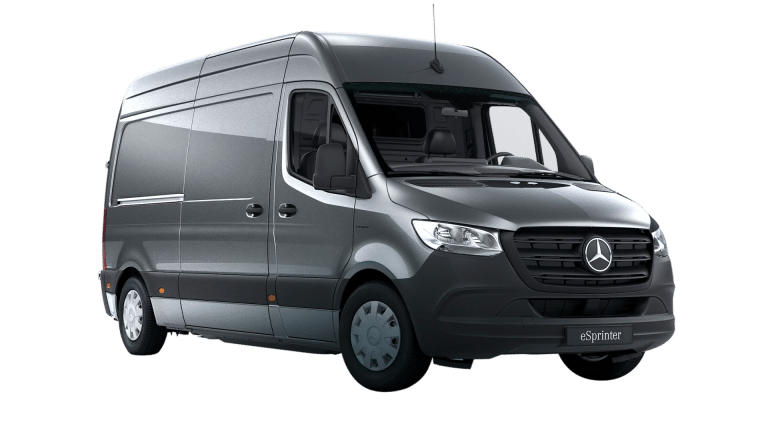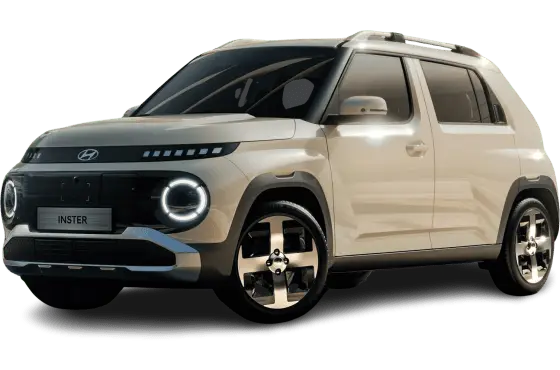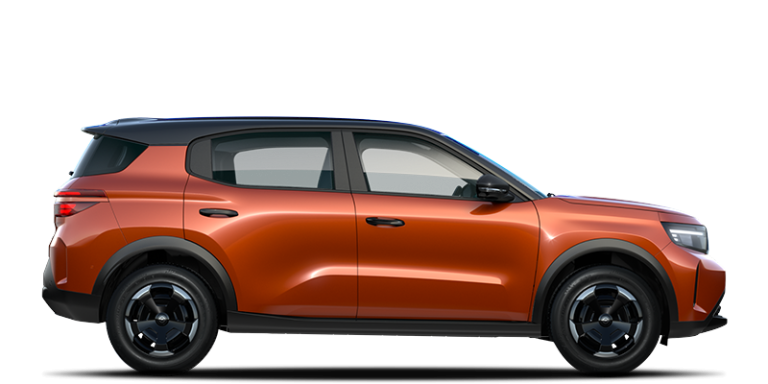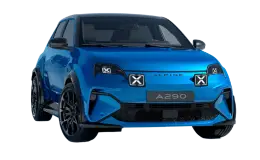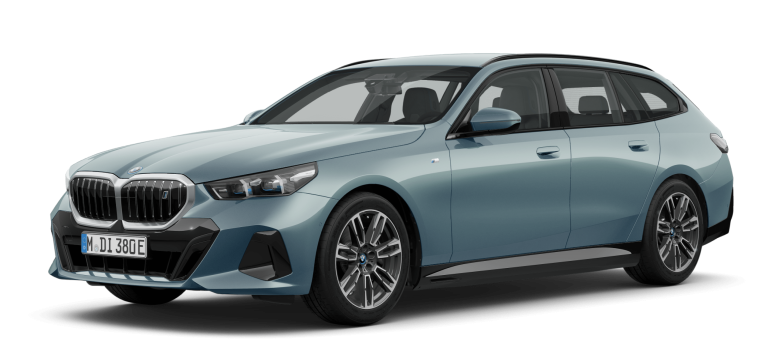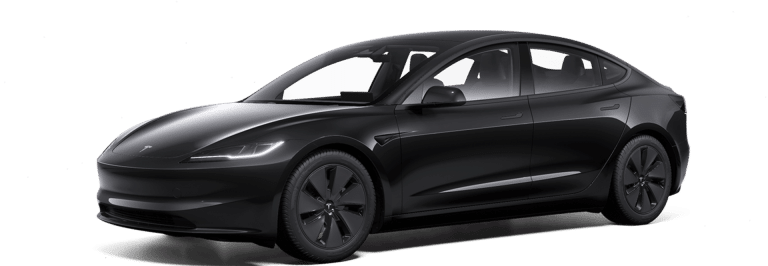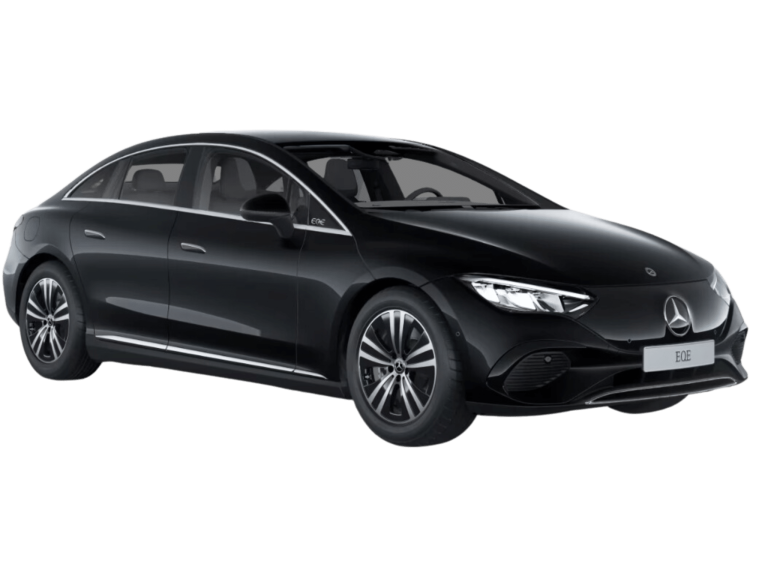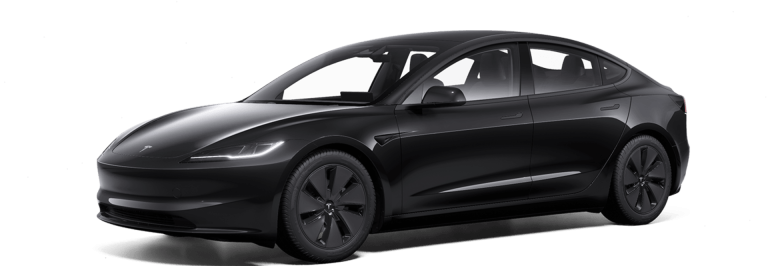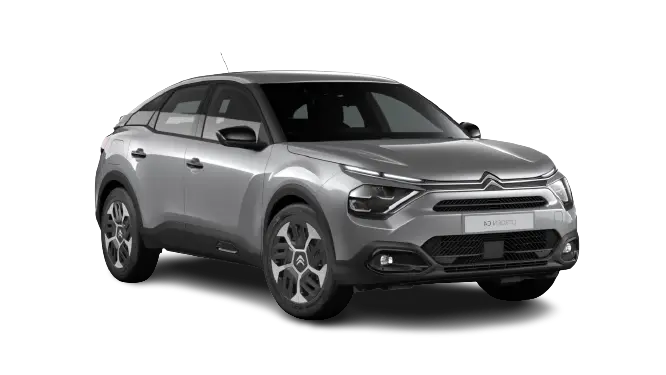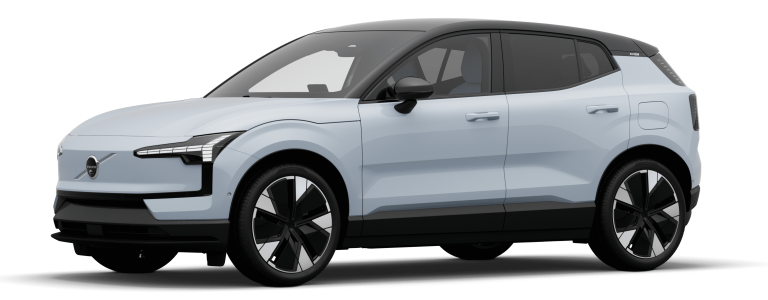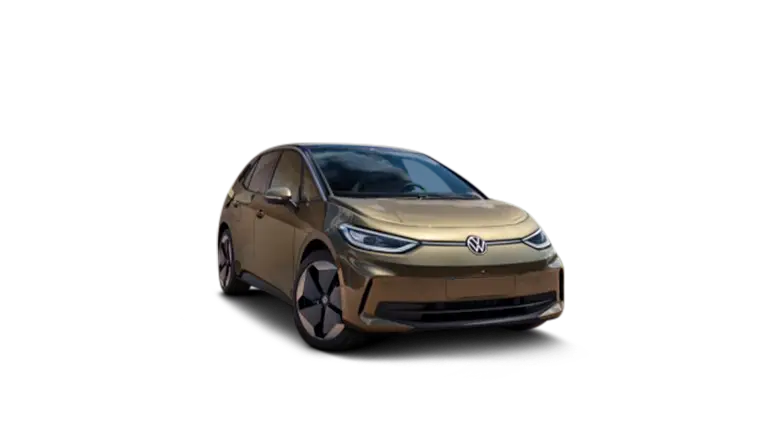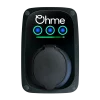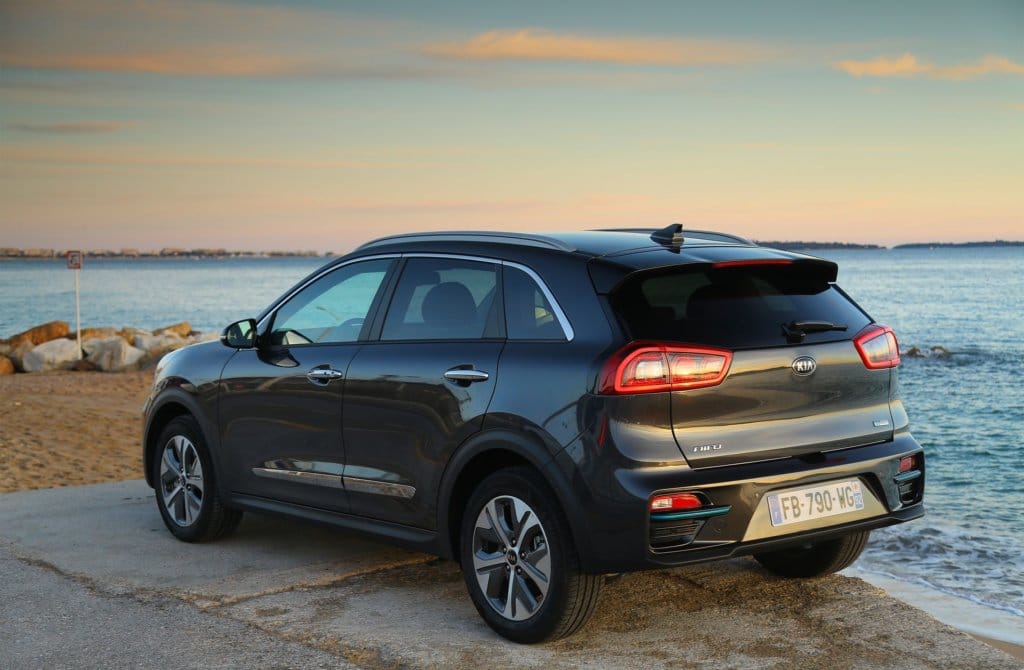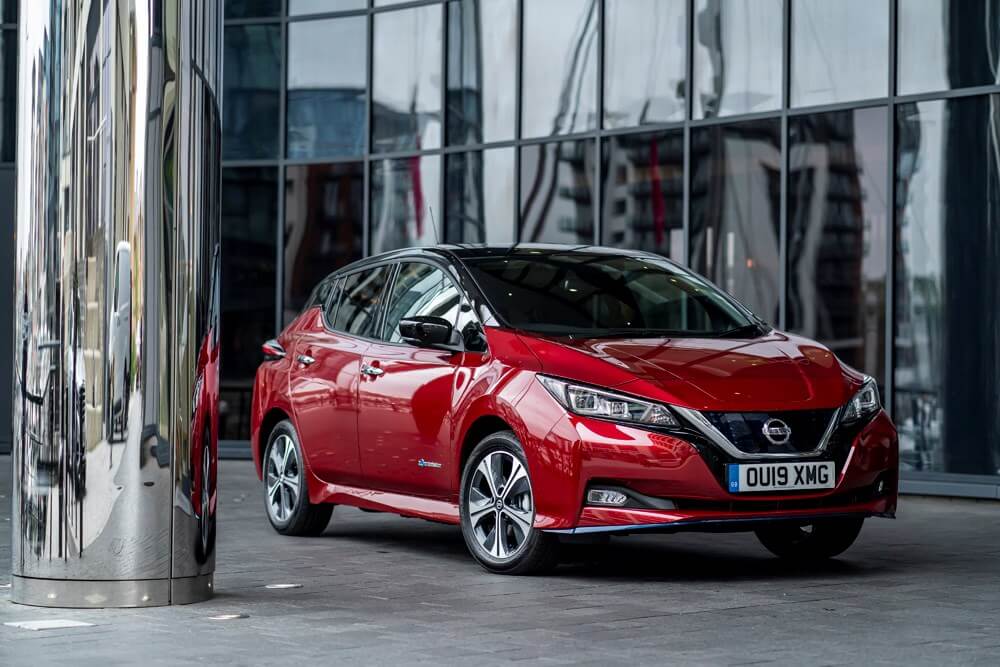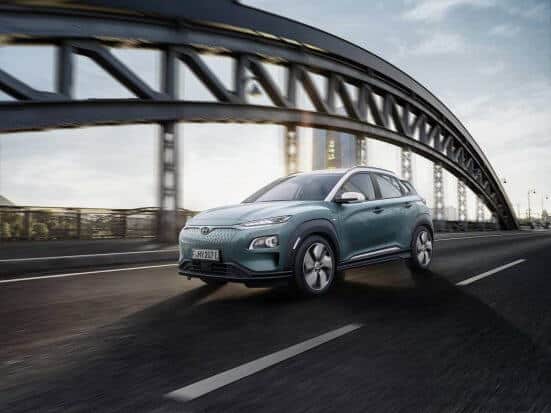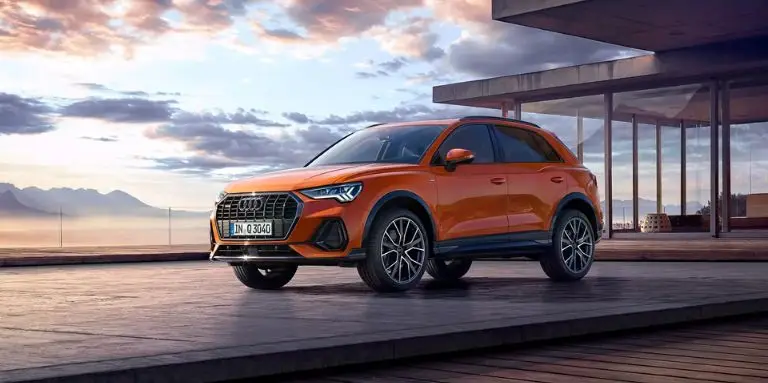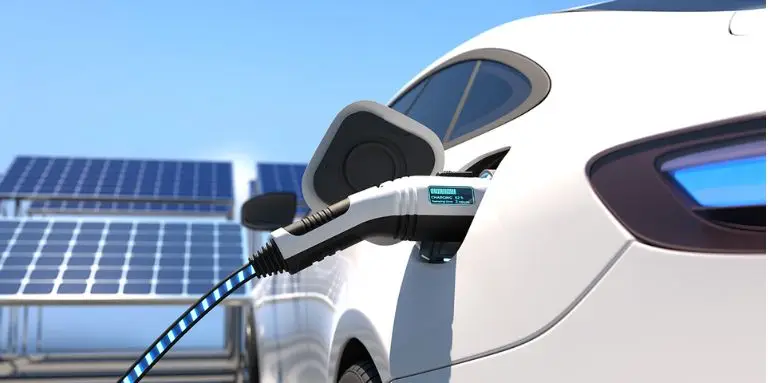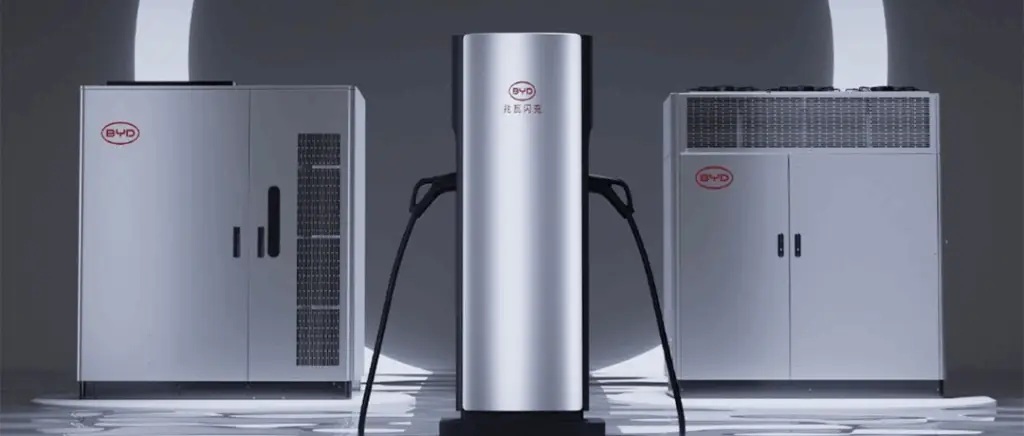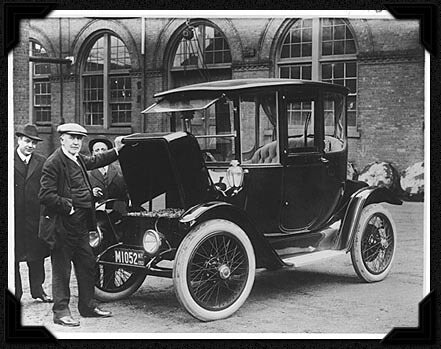
Today, electric vehicles are back in vogue. Cheaper to run, tax-efficient and, of course, noiseless, electric vehicles are winning over new customers. And some professions have more interest in taking the plunge than others. This is particularly true of cabs.
Cabs in France
The profession of cab driver is regulated in France. The profession is carried out on behalf of private companies (cab networks, vehicle rental with drivers, etc.), government bodies (public services, armed forces, etc.) and private individuals, in contact with a diverse clientele (professionals, tourists, etc.). Being a cab driver can be hard work: many work nights and public holidays. For those who drive in densely populated areas, the risk of pollution-related illnesses is high.
After reading this article, you'll know :
- How to become a cab driver
- Electric cabs in 2019: the situation
- How to choose your electric vehicle
- How to load
- What are your advantages as an electric cab?
- How to create your own clientele
Why choose an electric vehicle when you're a cab driver?
Whether you're self-employed or work for a company, the cab business is all about amortizing your car. How to maximize profits from your vehicle and reduce your fixed costs. That's where the electric car comes into its own.
Why?
- About €2/100 km: recharging costs 4 times less than a full tank of petrol:
- Very low maintenance costs: up to 4 times less expensive than a combustion vehicle
- As a professional, you can benefit from a number of grants if you buy a 100% electric vehicle
- Municipalities help you: you benefit from many advantages as an electric cab driver
- Customers are delighted: no noise. The experience will be excellent, and you'll be able to build up a loyal, personal clientele.

How do I become a cab driver?
If you're already a cab driver, congratulations. You can move on to the next step. If you're not yet a cab driver, follow the guide to becoming a cab driver.
Conditions for becoming a cab
To become a cab driver, you must :
- Hold a valid category B driver's license
- Obtaining a 1st aid diploma or PSC 1 less than 2 years old: this diploma is accessible to all, and requires no pre-requisites. The course costs between 50 and 80 euros, but discounts are available if you are unemployed or a student, for example.
- Clean criminal record (B2 extract)
- Pass a medical examination and be declared physically fit by an approved physician
Obtaining your professional cab card
A professional cab card is required to work as a cab driver.
To obtain your cab card, you need to obtain the "Certificat de Capacité Professionnelle de Conducteur de Taxi".
The exams have been organized by the chambers of trades and crafts since 2017. Each chamber has its own exam, so contact the one in your département.
The following documents are required to complete the file:
- a request to register for the exam on the desired date;
- a photocopy of both sides of a valid national identity card or passport;
- for non-EU nationals, a work permit;
- Proof of address less than 3 months old;
- a photocopy of both sides of your B driving licence ;
- a recent passport photograph ;
- the candidate's signature ;
- payment of examination fees ;
- for candidates who have been eligible for less than 3 years, a certificate of successful completion of the eligibility test.
The exam includes several tests on a variety of subjects: public transport regulations, road safety, management, local regulations, driving test, French and English. Registration for the 7 theoretical eligibility tests and the practical admission test costs €195. There are several exam dates per year.
If you pass your exam, the prefect has three months to issue you with your professional cab card. This professional card specifies the department(s) in which the successful candidate may operate.
Parking permits (ADS)
In order to operate as a cab, it is essential to obtain aparking authorization (ADS ), better known as a "cab license" or "plaque". The cab driver can then either work as a lessee or as an employee on behalf of an operator holding an ADS.
Where to apply
Applications must be submitted to the town hall (except in Paris).
In Paris, applications for "Parisian cabs" are made to the Prefecture by the Prefect of Police.
How much does it cost?
You have two options:
- You can obtain it free of charge at the town hall, but there is often a long waiting list before you get it. It can take anywhere from a few months to several years.
- Purchase (transfer): a cab owner who wishes to cease operations and transfer his or her license, provided it was issued before October 1, 2014. The price must be agreed by both parties.
Which legal status to choose?
Your choice of legal structure will depend on your license.
- If you own your license, you can become a self-employed cab driver
- If not, you'll be a salaried cab driver.
If you are a self-employed cab driver, you will need to set up your own business.
This table summarizes the advantages and disadvantages of each status. The difference lies in the manager's social status and remuneration.
|
SARL/EURL |
SAS / SASU |
|
|
Number of people |
1 (EURL) 100% owned |
1 (SASU) to unlimited |
|
Liability |
Limited to contributions |
Limited to contributions |
|
Share capital |
No minimum required |
No minimum required |
|
Articles of association to be drafted |
Yes |
Yes |
|
Management |
Manager (one or more), must be a natural person, partner or not |
Chairman + other possible bodies, natural or legal person, partner or not |
|
Manager's social status |
TNS if majority management, assimilated employee in other cases |
Assimilated employee |
|
Executive compensation |
The EURL manager is affiliated to the Sécurité Sociale des Indépendants (formerly RSI), as a Travailleur Non Salarié, so he will have fewer social security contributions to pay, and his remuneration will be higher. |
Presidents are covered by the general Social Security system, thanks to their status as "assimilated employees". As such, you enjoy virtually the same protection as salaried employees, and are subject to the same contributions. |
|
Start-up assistance |
ACCRE, ARCE or ARE continuation (full continuation possible if IS option and unpaid manager) |
ACCRE, ARCE or ARE continuation (full continuation possible if unpaid manager) |
Electric cabs around the world
Pollution, particularly in large cities, is not a French problem. Many cities around the world are familiar with this problem and have been fighting for years to reduce pollution in their cities.
Electric cabs in London
London EV Company (LEVC) is a London-based electric vehicle company. They are the world's leading manufacturer and dealer of specialized cabs. London EV Company (LEVC) has reached an important milestone in the sale of its brand new 0 emission cab, the TXX.
The electric cab manufacturer recently announced that it had rolled out 10,000 all-electric, zero-emission cabs from its factory, saving 6,800 tonnes of carbon dioxide emissions into the atmosphere - the equivalent of 1,500 return flights from Sydney to London.
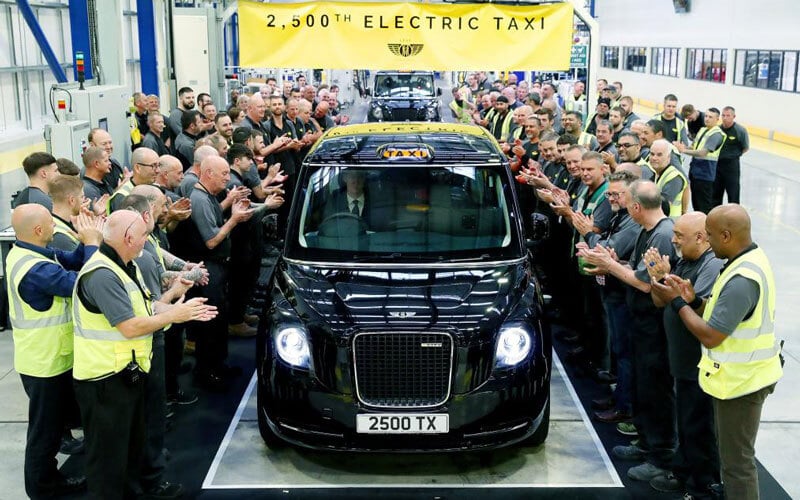
The electric vehicle manufacturer, which produces TX electric cabs at its Ansty site in Coventry, has over 2,000 cabs operating in London and 20 other UK cities. The company also produces electric cabs for Norway, the Netherlands, Germany, Sweden, Hong Kong and Malaysia.
Across its entire fleet, London EV Company (LEVC) - part of Chinese carmaker Geely, which has invested £500 million in the cab manufacturer - claims to have helped save around 850,000 liters of fossil fuels.
According to the manufacturer, customers and drivers are delighted. The company is also supported by the local authorities in its efforts to improve air quality in London. The company is now tackling electric vans to meet the demand from tradesmen.
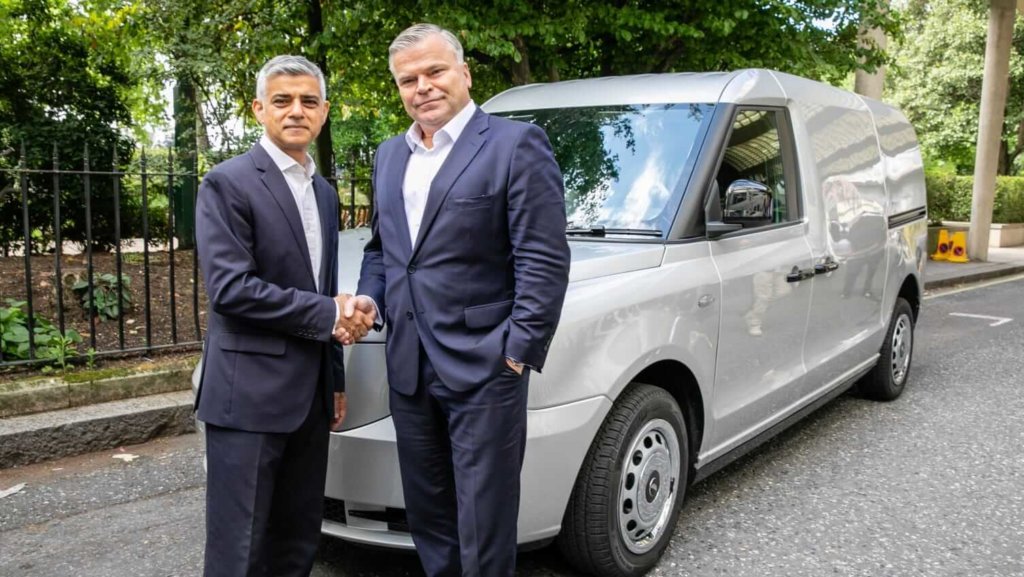
Electric cabs in Shenzhen
In southeast China, Shenzhen is a modern metropolis linking Hong Kong to mainland China. Shenzhen has been described as "China's Silicon Valley". Formerly the world's factory, the city was born in the 1970s and has since capitalized on new technologies. Many (very) big companies are based in Shenzhen: Huawei, DGI, ZTE, and the giant Tencent (the father of Wechat), to name but a few.
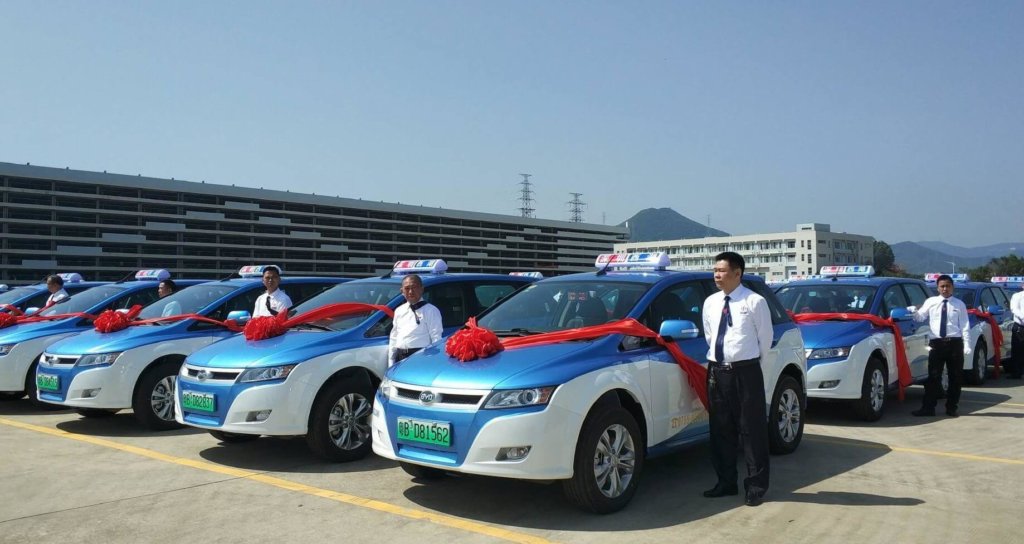
Since 2017, the Chinese city has invested to eliminate diesel traffic and reduce its noise pollution. All the city's buses were electrified at the end of 2017. Cabs soon followed. The Shenzhen Transport Commission has announced that 99% of the city's more than 21,000 cabs are now electric. It's a small revolution in China, even if efforts need to be made to make recharging these cabs more fluid.
Other Chinese cities are following suit, including Beijing. The aim is to reduce out-of-control pollution in Chinese cities.
Electric cabs in Montreal
Built in Shenzhen, more than 2,000 BYD e6 100% electric models will be on the road in Quebec, according to E-Taxi, the first Canadian dealer for Chinese carmaker BYD.

In Quebec, thanks to financial assistance from the federal and Quebec governments, the price of the e6 has been reduced. With a range of up to 300 km in winter, this model is a great success in Canada. These vehicles join the ranks of electric cab vehicles already on the road, including Nissan Leafs and Teslas.
Electric cabs in Monaco
This summer 2019, Monaco is going green. More than 20 electric cabs recognizable by their "Eco-Taxi Monaco City Only" logo are circulating around the city. Their aim is to offer an alternative to the principality's tourists.
With a basic pass set at €15, these 100% electric vehicles serve the Principality's territory only. They are being tested until October 2019.
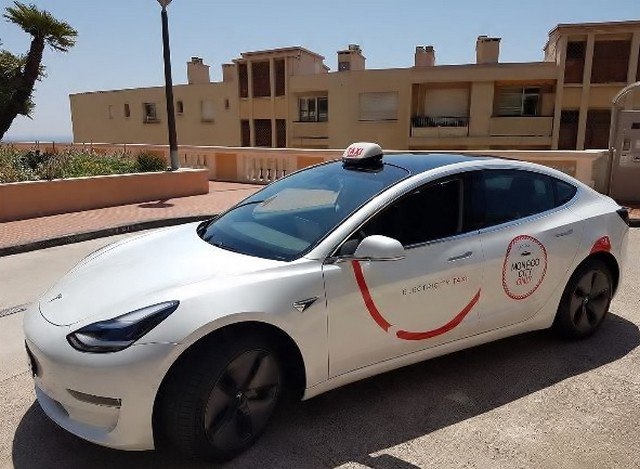
Electric cabs: which vehicle to choose?
If you've decided to opt for an electric cab, you're probably wondering about the models available. As a cab driver, you need to buy sturdy vehicles that will cost you the least to maintain.
Tesla Model 3 Standard Range + 2019
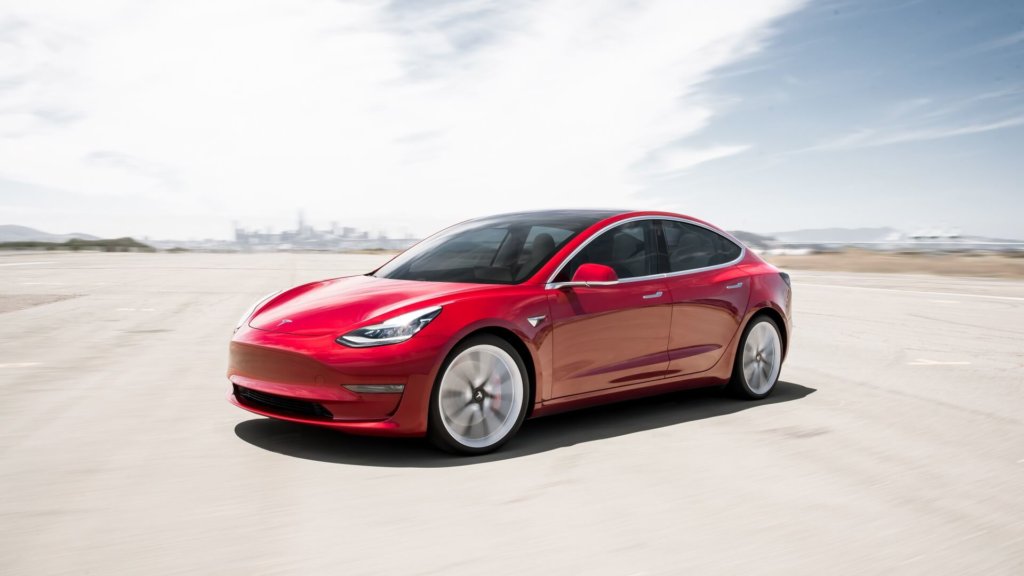
Originally, the Tesla Model 3 was supposed to be Tesla's mainstream model. Introduced in 2019, the Tesla Model 3 is instead a 100% electric alternative to conventional luxury sedans. It is now available to order in three versions:
- Tesla Model 3 Standard Range + from €48,600 (excluding environmental bonus)
- Tesla Model 3 Long Range from €59,000 (excluding environmental bonus)
- Tesla Model 3 Performance from €63,990 (excluding environmental bonus)
The basic range starts at 410 km for the Autonomie Standard Plus Range + version, up to 560 km for the Grande Autonomie version. Deliveries are fairly rapid, and are scheduled for M+1 at the time of writing.
Kia e-Niro 64 kWh
The Kia e-Niro first went on sale in South Korea in 2018, and was soon exported worldwide. It is the Korean brand's second electric vehicle after the Kia Soul. Bonus? A 64 kWh battery that gives it a range of 485 km on mixed routes and 615 km on urban routes to satisfy heavy-duty drivers. It is available in several versions to suit all motorists:
- e - ACTIVE from €42,500 (excluding environmental bonus)
- e - DESIGN from €44,500 (excluding environmental bonus)
- e - PREMIUM from €46,500 (excluding environmental bonus)
➡️ READ ALSO - Our test drive of the Kia e-Niro 64 kWh
Nissan Leaf e+ (62 kWh)
The first-generation Nissan Leaf has sold over 400,000 units since its launch in 2010. Today, the second generation has arrived with more power, better range and a relatively affordable price.
The new Nissan Leaf e+ 62 kWhretains everything that worked in previous generations, but improves on one key point: range. With the new Nissan Leaf 62 kWh, you can drive up to 400 km without recharging in the city, which is very practical, especially in Paris. The Leaf is the most complete electric vehicle in terms of price and range today.
A version of the Nissan Leaf 40 kWh is also available, with a range of 270 km and an introductory price of €35,400 excluding the environmental bonus.
ALSO READ - Our test of the Nissan Leaf 62 KWh
Hyundai KONA Electric 64 kWh
There are three things you need to know about the Hyundai Kona Electric: it's a small electric SUV, it has a range of 450 km and it costs €42,400 (excluding environmental bonus). The Hyundai KONA Electric is a true competitor to its cousin the Kia e-Niro and the Japanese Nissan Leaf. A genuine 100% electric UFO, the Kona's youthful, urban styling is sure to turn heads at the crossroads.
It is available in two versions:
- Creative from €43,900 (excluding environmental bonus)
- Executive from €46,400 (excluding environmental bonus)
➡️ READ ALSO - Our test drive of the Hyundai Kona Electric 64 kWh
In a nutshell
To sum up, if we take the main information together, here's a summary table of the different electric vehicles suitable for cab drivers in 2019.
|
Model |
Power |
Battery (estimated usable) |
Autonomy (WLTP) |
Price (excluding environmental bonus) |
|
Tesla Model 3 Autonomie Standard Plus |
150 kW (204 hp) |
50 kWh |
415 km |
48 600 € |
|
Tesla Model 3 Long Range |
258 kW (351 hp) |
74 kWh |
560 km |
59 000€ |
|
Kia e-Niro 64 kWh |
150 kW (204 hp) |
64 kWh |
455 km |
42 500 € |
|
Nissan Leaf 40 KWh |
110 kW (150 hp) |
38.2 kWh |
270 km |
35 400 € |
|
Nissan Leaf 62 KWh |
160 kW (218 hp) |
60 kWh |
385 km |
43 700 € |
|
Kia e-Niro 64 kWh |
150 kW (204 hp) |
64 kWh |
455 km |
42 500 € |
|
Hyundai Kona 64 kWh |
150 kW (204 hp) |
64 kWh |
449 km |
42 400 € |
Where can you recharge your electric vehicle?
Depending on the vehicle you choose, the plug will be different and you'll recharge differently. There are several types of plug for recharging your electric vehicle: Type 2, CCS, CHAdeMO, etc...

You have several options for recharging:
- Charging at home using a household socket
- Charging at home using a charging station
- Charging at public charging stations
Charging at home
This is the easiest way to recharge your electric vehicle. You have the option of recharging your electric cab using a normal household socket. This will give you an average range of just 120 km overnight.
You can also opt for a wallbox. As the name suggests, this is a wall-mounted box that lets you recharge your electric car faster and more intelligently, taking advantage of off-peak hours and without the risk of tripping your meter.
This allows you to keep control of your charging and recharge according to your electricity contract. Recharging is faster, and you can get a full charge overnight. You can find a list of all charging station suppliers on the Association nationale pour le développement de la mobilité électrique website.
Good to know: ask for several quotes to be sure of making the best choice.
Charging at public charging stations
As a cab driver, you'll also need to recharge at public charging stations. You can find the nearest charging points with the Chargemap application, which lists charging points near you.
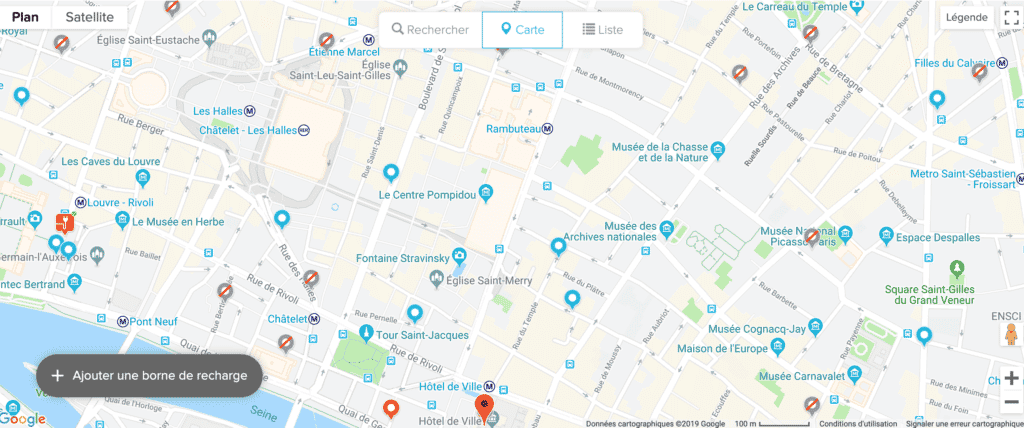
If you work as an electric cab driver in Paris, there are several options for recharging your battery. The main networks in Paris are those of Paris recharge (formerly Autolib') and Belib'. There are also other charging stations in and around the capital, including those operated by IZIVIA at Paris-CDG and Paris-Orly airports.
➡️ ALSO READ - How to recharge your electric car in Paris?
Paris recharge (standard recharge - 15 to 20 km/hour recharge)
With over 1,000 terminals and 200 stations across the capital, Paris recharge terminals are ubiquitous. As a cab driver, you'll need to pay a subscription fee of €600/year for unlimited recharging on this network. This is a very good deal if you intend to recharge regularly at these terminals at a cost of just €50/month.
Belib' (semi-rapid recharging 150 to 200 km/hour)
This is Paris's public network of charging stations for electric vehicles. With a maximum output of 22 kW, Belib' charging stations will give you enough range for a break or while you're waiting for a customer. The first hour's charging costs just €1. After that, rates soar to over €15 an hour. So it's best to multiply your recharges, but never stay more than an hour at a single terminal.
Corri-Door IZIVIA (fast recharge (300 to 500 km/hour recharge))
Ideally located at Paris-CDG and Paris-ORLY airports, on the ring road around Porte d'Aubervilliers and in the La Défense district, the Corri-Door network will enable you to recover 80% of your battery in no time, so you can get on with your day if you have several long journeys to make during the day. The charge is €1/5 min.
New
Paris airports have invested in recharging infrastructures dedicated to Taxis and VTCs. In the Orly pro parking lot, 10 22 kW charging stations (up to 150 km range per hour of charging) and one 50 kW station (up to 350 km range per hour of charging) have been installed. A similar installation is planned for the "nouvelle base arrière Taxis" pro parking lot at the eastern end of Charles de Gaulle airport.
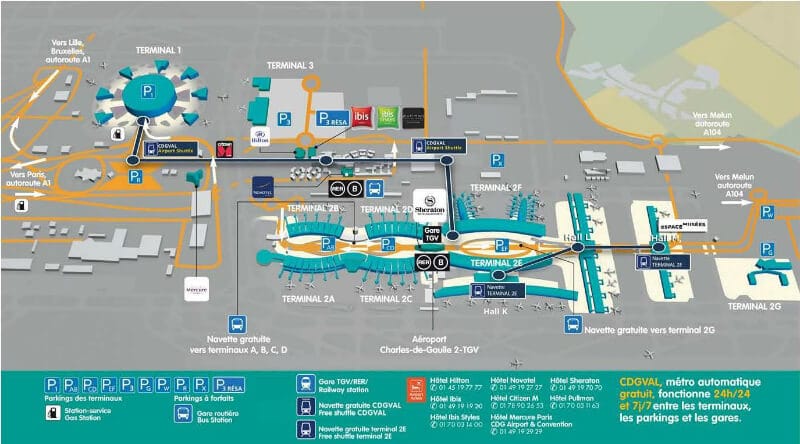
Other terminals
Not necessarily part of a large network, a number of additional charging stations exist in Paris. Some are self-service, such as the fast charging stations at Nissan dealerships in Montrouge, Paris 12 and Nanterre.
Effia parking lots are also equipped with standard pay stations, which can be useful during a break. A number of shopping centers are also equipped with standard, semi-rapid and rapid charging stations in the Paris suburbs, including the Auchans in Villebon-sur-Yvette and Villiers-sur-Marne, and the IKEA stores in Vélizy-Villacoublay and Franconville. All charging stations can be found on the Chargemap application.
In Lyon and Nice
As in Paris, the cities of Lyon and Nice are very well equipped with charging stations, notably the Bluely (standard charge) and CNR (fast charge) networks in Lyon and the plug-in network in Nice.
What are your advantages as an electric cab driver?
Like many people, you may doubt the usefulness of an electric car, given the high purchase price. But don't panic, there are many advantages to switching to an electric vehicle as a cab driver.
Savings through use
As an electric vehicle owner, you'll no longer have to fill up your tank, but recharge your vehicle.
Count on average 2€ / 100 km (against 8.5€ /100 km for a diesel and 11.5€ / 100 km for a petrol).
Depending on when you choose to charge your vehicle, these savings can increase even further; for example, if you choose to charge your vehicle during off-peak hours, the price of a "full tank" of electricity will be cheaper. You're also not affected by fluctuating oil prices and their negative effects on motorists.
Good to know: during the day, off-peak hours are between 10 a.m. and 5 p.m. At night, you should connect between 10pm and 6am.
ALSO READ - When should you recharge your electric car?
Low maintenance costs
Electric vehicles have fewer parts (around 40) than traditional vehicles (over 300).
they are therefore less expensive to maintain, as there are fewer parts that could potentially fail or need replacing.
For example, there are no oil changes, belt changes or gearbox changes. The only maintenance required concerns consumables (tires, brake pads, etc.). It's worth noting that brake pads and discs last on average 2 times longer, thanks to the regenerative braking of electric vehicles.
Electric vehicles are therefore much more reliable than their combustion counterparts, and can be driven long distances without hassle.
Silence on board
When you're a cab driver, you deal with all kinds of customers. And sometimes, silence makes all the difference. In an electric vehicle, it's silence on board. You can put on some music or enjoy the drive to your destination in silence. And don't forget, there's no noise pollution, especially if you're driving at night.
Assistance for the purchase of an electric vehicle
In addition to the €7,000 ecological bonus, you can also claim the conversion bonus (if you already own a car) of up to €2,500 and regional bonuses depending on the region where your company is registered.
Ecological bonus
The ecological bonus only applies to new vehicles, and goes up to €6,000 for a new electric vehicle.
|
Passenger cars emitting less than 20 g CO2/km |
4,000 euros limited to 27% of cost |
|
Cars and vans emitting less than 20 g CO2/km |
5,000 euros limited to 27% of cost |
|
N2 and M2 vehicles emitting less than 20 g CO2/km benefiting from a weight exemption and with a GVW up to 3.5 tonnes |
4,000 euros limited to 27% of cost |
Conversion bonus
The conversion premium has changed and from August 1, 2019, the following scale is applied for electric vehicles.
|
Conversion bonus |
New electric vehicle |
Used electric vehicles |
|
Companies |
2 500€ |
2 500€ |
Regional aid
The Île-de-France region is offering a €6,000 subsidy for the purchase of an electric vehicle if you're a cab driver, in addition to the €7,000 ecological bonus. All in all, that's a total saving of €13,000 in the Île-de-France region if you're an electric cab driver.
READ OUR SPECIAL REPORT - Subsidies for the purchase of an electric car in 2023
Paris City Council grants
Reducing pollution is one of Paris City Council's top priorities. To achieve this, innovative solutions must be found to encourage the use of clean vehicles and thus reduce fine-particle pollution.
As an electric cab, Paris City Hall offers financial assistance:
- 6,000 for a new electric or hydrogen-powered vehicle (cash purchase or LLD/LOA)
- 3,000 € for a used electric or hydrogen vehicle (cash or LLD/LOA)
The application is made entirely online on the town hall website https://moncompte.paris.fr/
What are the terms and conditions?
- Parisian cab license holder
- 12 months' seniority for the used vehicle
- 5 aids per year per licensee maximum
What documents do I need to provide?
- Parking card
- Driver's license
- Bank details (IBAN, BIC, bank name and logo)
- Proof of activity
- Invoice or rental contract
- Cab registration document
Good to know: assistance from the Mairie de Paris cannot be combined with regional assistance.
In a nutshell
As you can see, switching to electric cars can be a real opportunity for cabs. And not just for their ecological conscience...
Don't hesitate to find out more before taking the plunge.
What about you? Are you planning to switch to an electric vehicle for your cab business?
